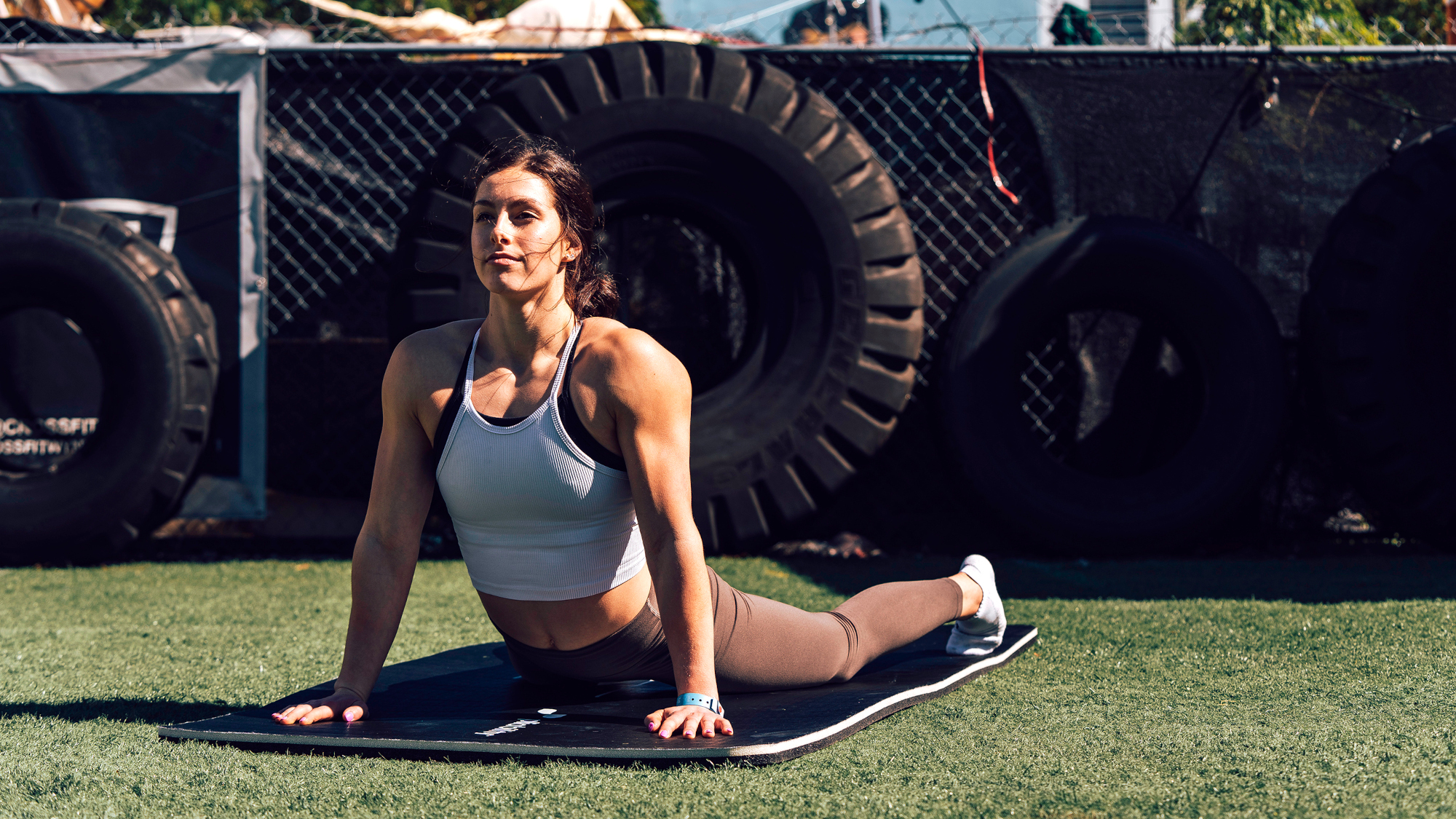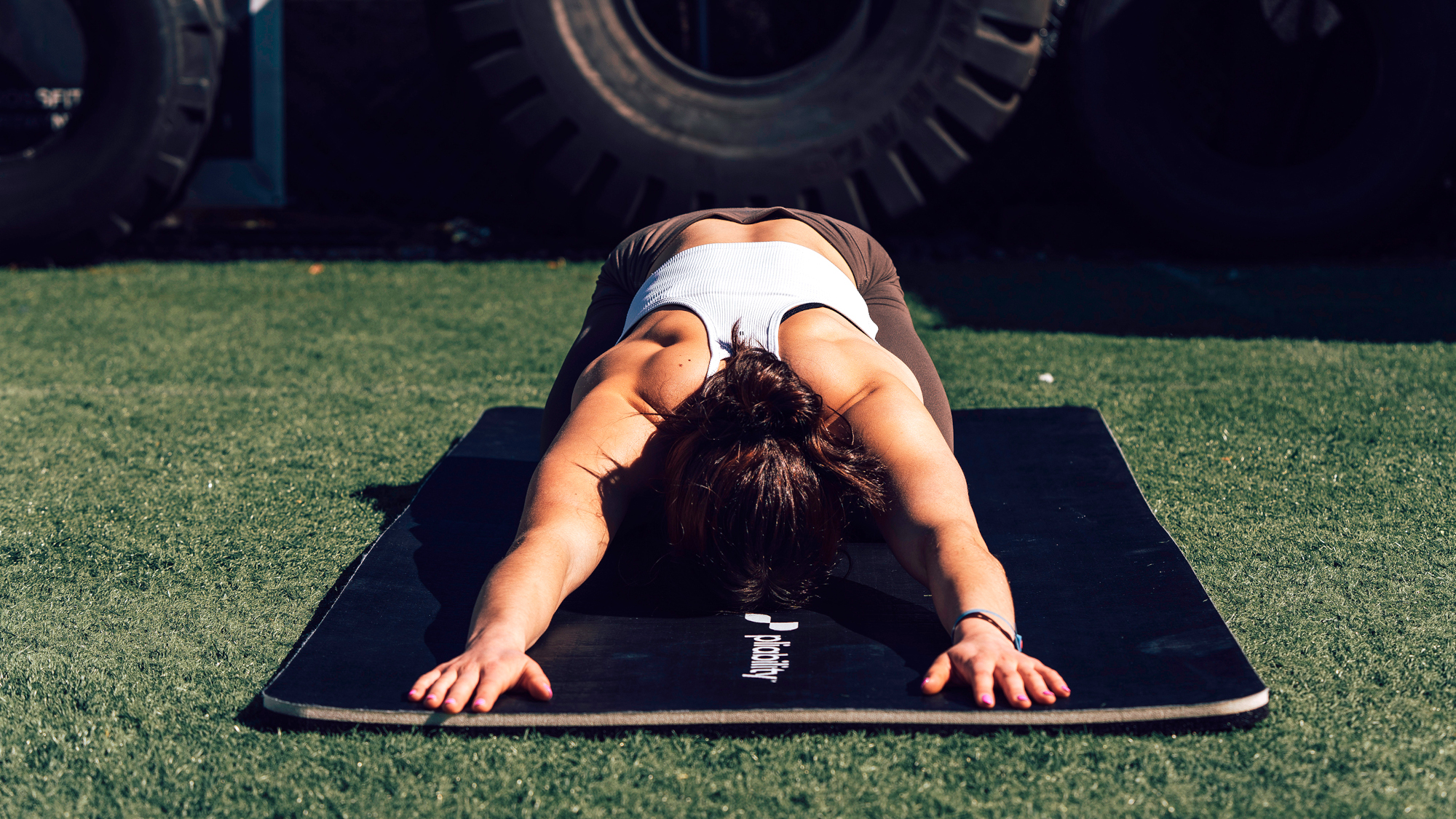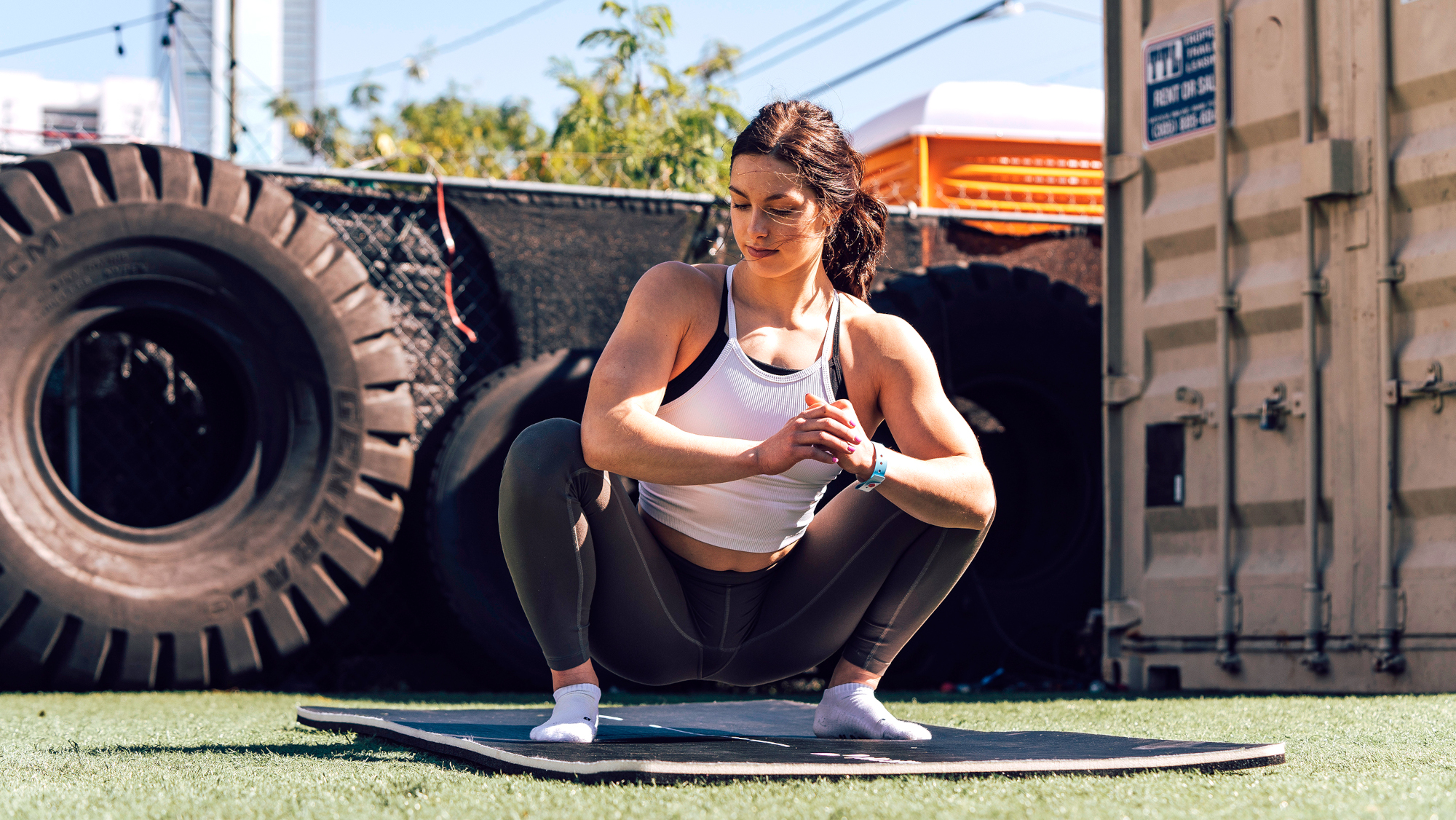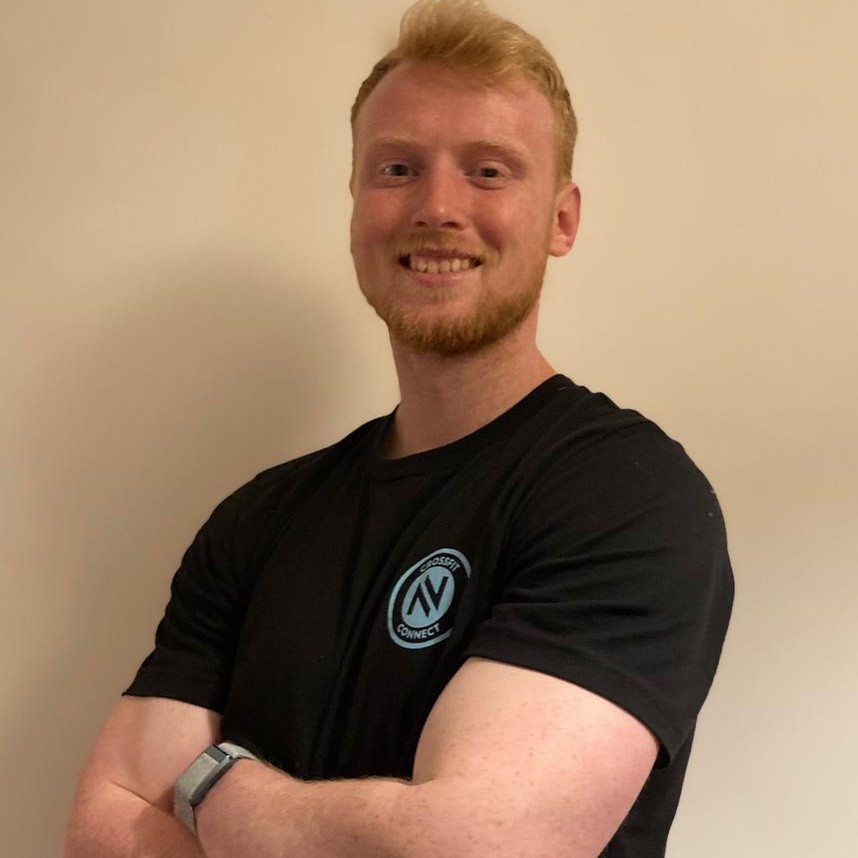I Tried CrossFit Star Emma Lawson’s Mobility Routine And It Wasn’t Just My Body That Benefited
To recover like one of the fittest women on Earth, try the session for yourself

CrossFit, especially elite-level CrossFit, is hard. Very hard. Slinging heavy weights around, running, jumping, climbing ropes, performing high-skill gymnastics – top-level competitors ask a lot of their bodies, so it’s imperative their recovery is on point.
This rings true for CrossFit athlete Emma Lawson, who relies on stretching routines from mobility and recovery app Pliability to help keep her body healthy enough to withstand the rigours of the CrossFit Open and beyond. So I thought I ought to follow her lead and treat my body to a bit of TLC.
Canadian sensation Lawson is one of the hottest names in the sport, having earned the rank of sixth fittest woman on Earth during her rookie year at the CrossFit Games in 2022 when she was just 17.
I’m 26, and according to my 2022 CrossFit Open scores I’m the 64,217th fittest man on Earth. I’ve been putting in the hard yards over the last year to improve my ranking, but this increased training volume and intensity has left my limbs battered and bruised, so I grabbed the excuse to do a recovery session with both aching hands.
The session looks fairly straightforward at first glance, consisting of just four poses each to be held for about a minute.
So I slipped into my stretchiest jogging bottoms, unfurled my yoga mat and sank into the first position.
1 Child’s pose

Time 30-60sec
Sign up for workout ideas, training advice, reviews of the latest gear and more.
How to do it: Kneel with your toes together and knees hip-width apart. Take a deep breath in and as you exhale fold forwards from your hips, extending your arms and placing your hands palms-down on the floor.
What it’s like: Previous efforts to look after my body have seen me turn to yoga, so child’s pose is like an old friend. It’s described as a “resting pose” by Pliability, and restful it is. As I sank slightly deeper into the stretch with each exhale, I could feel tension in my shoulders and lower back in particular release.
2 Sphinx/Seal
Time 60sec
How to do it: Lie face down on the floor with your hands by your chest, forearms on the floor and elbows tucked in to your sides. Lift your chest, keeping your head and midsection relaxed. Hold. If your mobility allows, perform the seal pose instead, on your hands instead of forearms.
What it’s like: If deadlifts are a regular fixture in your workout plan, you’re going to like this one. Given the minimal movement required to get into position (raising my chest slightly off the floor while lying on my front), I was surprised how much I felt it in my lower back. I could feel the muscles around the base of my spine working to hold the position, while my abs relaxed and lengthened on a rare day off.
3 Dragon pose
Sets 3 Time 20-30sec each leg
How to do it: From standing, step forwards into a lunge, lowering so your knees are bent at 90° and your rear knee is resting on the floor. Brace your core, extend your arms overhead, and press your hips forwards without overextending your back.
What it’s like: This was by far my favourite position. I played football growing up, so describing my hip flexors as tight would be an understatement. As a result, I found the stretch through the front of the rear leg was actually rather enjoyable, and the full range of motion around my hips, groin and knees felt easier to access after a few rounds on each side.
4 Sumo squat

Time 60sec
How to do it: Stand with your feet wider that hip-width apart. Push your hips back and bend your knees to lower as far as you can. Press your elbows into your knees and your hands together in front of your chest, keeping your chest up. Hold this position, letting your hips sink further if possible.
What it’s like: A far cry from the relaxation of child’s pose, this position pushed me outside my comfort zone. I’m used to spending as little time as possible at the bottom of a squat, bouncing out of the bottom of the movement during one-rep max attempts, which meant this move highlighted my lack of hip and ankle mobility.
Within 30 seconds, the muscles running along the front of my shin were on fire, and I could really feel the stretch in my groin as I pushed my knees outwards with my elbows. I managed the 60 seconds, more through stubbornness than any athletic ability, and was surprised to find just how easy it felt to hit depth for a few bodyweight squats afterwards.
No short routine can wipe away years’ worth of residual tightness, but having got the blood flowing, I did feel fresher and more limber after holding the prescribed positions. Immediately after the session I was able to sink into a deep squat with greater ease, and my hips felt looser than usual when I assumed a deep lunge position.
While the physical benefits are Pliability’s chief selling point, one of my favourite things about this session was the change of pace it offered. I tried it after my usual workout routine – a cocktail of weightlifting, gymnastic movements and a metcon, accompanied by pumping music and plenty of sweat.
Between working out, work, socialising and other everyday commitments, opportunities to take a quiet moment can be few and far between. Settling down for a few quiet stretches made for a much-appreciated break that left my mind and body feeling soothed and refreshed.

Harry covers news, reviews and features for Coach, Fit&Well and Live Science. With over a decade of training experience, he has tried everything from powerlifting to gymnastics, cardio to CrossFit, all in a bid to find fun ways of building a healthy, functional body.
